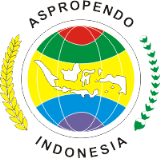PEMANFAATAN TEKNOLOGI TEPAT GUNA BERBASIS STRATEGI DIVERSIFIKASI KONSENTRIS UNTUK MENINGKATKAN KUALITAS USAHA PRODUKSI MINYAK CENGKEH
Abstract
A business strategy is a very important aspect of running a business so that the business is able to develop and compete competitively with its competitors, thus impacting on sales and operating revenues. This study aims to assess the use of appropriate technology based on a concentric diversification strategy to improve the quality of clove oil production in Batu Putih Village, Tellu Limpoe District, Bone Regency. This type of study is descriptive qualitative with 3 informants. Data collection techniques by means of observation, interviews, and documentation. The technique of validating the data used source triangulation. The results of this study indicate that the quality of business in clove oil production uses a quality control system through the PDCA cycle, namely planning, working or processing, checking or evaluation and corrective action. In planning, the business owner makes careful considerations in accordance with the applicable operational standards so that the quality of the clove oil to be made meets the criteria and is suitable for sale. In the aspect of doing, clove oil business owners learn by taking part in trainings conducted by related agencies to get maximum results. In addition, reading articles about clove oil manufacturing innovations is also important because it is necessary to upgrade the latest knowledge about clove oil processing. In the checking aspect, entrepreneurs set limits in determining criteria when making clove oil so that the quality of the product made is feasible to be marketed because clove oil is a product that is sought after by consumers. In the aspect of action, the business owner has rearranged the procedure for making clove oil which has undergone improvements due to improvements mainly in working time efficiency of the clove oil business unit. The results of the product quality analysis improved the quality of the clove oil business in Batu Putih Village, Tellu Limpoe District, Bone Regency.
Key words: Appropriate Technology, Business Quality, Clove Oil, Concentric Diversification Strategy
Full Text:
PDF (Bahasa Indonesia)References
Alexy, O., West, J., Klapper, H., & Reitzig, M. (2018). Surrendering control to gain advantage: Reconciling openness and the resource-based view of the firm. Strategic Management Journal, 39(6), 1704–1727. https://doi.org/10.1002/smj.270 6
Bacq, S., & Eddleston, K.A. (2018). A resource-based view of social entrepreneurship: How stewardship culture benefits scale of social impact. Journal of Business Ethics, 152(3), 589–611. https://doi.org/10.1007/s10551- 016-3317-1
Beynon, M. J., Jones, P., & Pickernell, D. (2020). SME development strategy and product/service innovation intention: A NCaRBS analysis of the role of uncertainty. The International Journal of Entrepreneurship and Innovation, 21(1), 3–16. https://doi.org/10.1177/1465750 318807401
Dewi, D. A. L., & Maslichan. (2017). Upaya peningkatan kualitas produksi dan manajemen usaha pada UMKM genteng dan batu bata. Jurnal pengabdian Pada Masyarakat (PENAMAS), 1(1), 34-42.
Fagbemi, F., Oladejo, B., & Adeosun, O. A. (2020). The effectiveness of poverty alleviation policy: Why is the quality of institutions the bane in Nigeria?. Review of Development and Change, 25(2), 215–236. https://doi.org/10.1177/0972266 120975262
Hasan, M. (2019). Characteristic of human development: Socioeconomic dimension. KnE Social Sciences, 3(11), 865-874. https://doi.org/10.18502/kss.v3i 11.4055
Holden & Christopher. (2018). Global social policy: An application of welfare state theory. Journal of International and Comparative Social Policy, 34(1), 40–57. https://doi.org/10.1080/2169976 3.2017.1413993
Hughes, M., Hughes, P., Morgan, R. E., Hodgkinson, I. R., & Lee, Y. 2021. Strategic entrepreneurship behaviour and the innovation ambidexterity of young technology-based firms in incubators. International Small Business Journal: Researching Entrepreneurship, 39(3), 202–227. https://doi.org/10.1177/0266242 620943776.
Jacobson, T., & Chang, L. (2019). Sen’s capabilities approach and the measurement of communication outcomes. Journal of Information Policy, 9(1), 111-131. https://doi.org/10.5325/jinfopol i.9.2019.0111
Kaplan, B., & Duchon, D. (1988). Combining qualitative and quantitative methods in information systems research: A case study. MIS Quarterly, 12(4), 571-586. https://doi.org/10.2307/249133.
Kitsios, F., Kamariotou, M., & Talias, M. A. (2020). Corporate sustainability strategies and decision support methods: A bibliometric analysis. Sustainability, 12(2), 521. https://doi.org/10.3390/su12020 521.
Kurniawati, D., & Kusumawati, S. A. (2014). Pengaruh citra merek dan kualitas produk terhadap kepuasan dan loyalitas pelanggan (Studi pada pelanggan Kfc cabang Kawi Malang). Jurnal Administrasi Bisnis (JAB), 14(2), 1- 9.
Putri, R., L. (2016). Peningkatan kualitas produk melalui penerapan prosedur dan sistem produksi: Studi pada UD Wijaya Kusuma Kota Blitar. Wahana Riset Akuntansi, 4(2), 813-827. https://doi.org/10.24036/wra.v4 i2.7223
Priatma, D. (2013). Strategi komunikasi lembaga pemberdayaan masyarakat (LPM) dalam sosialisasi program pembinaan masyarakat di Kelurahan Loa Bakung Kota Samarinda. Ejournal Ilmu Komunikasi Fisip Unmul, 1(2), 70- 84
Saidani, B., & Arifin, S. (2012). Pengaruh kualitas produk dan kualitas minat beli pada ranch market. Jurnal Riset Manajemen Sains Indonesia (JRMSI), 3(1), 1-22.
Soetomo. (2015). Pemberadayaan Masyarakat: Mungkinkah Muncul Antitesisnya. Yogyakarta: Pustaka Pelajar.
Stevens, F., & De Bruycker, I. (2020). Influence, affluence and media salience: Economic resources and lobbying influence in the European Union. European Union Politics, 21(4), 728-750. https://doi.org/10.1177/1465116 520944572
Tahir, T., & Hasan, M. (2018). Poverty's characteristics and its reduction strategies: A case study. European Research Studies Journal, 21(2), 426-440. https://doi.org/10.35808/ersj/1 012
Tambunan, T. (2013). Pola pembangunan ekonomi di pedesaan. Jakarta: PT Pustaka LP3ES Indonesia.
Toelihere, M. (2014). Pengantar, pengembang dan penyebarluasan teknologi tepat guna. Jakarta: Dirktorat Jenderal Pendidikan Tinggi Depertemen Pendidikan dan Kebudayaan.
Yanah, Y., Nakhwatunnisa, H., & Sukarno, T.A. (2018). Strategy to increase the competitiveness of SME’s entreprises. JEJAK: Jurnal Ekonomi dan Kebijakan, 11(1), 138– 150. https://doi.org/10.15294/jejak.v 11i1.11705
Refbacks
- There are currently no refbacks.













